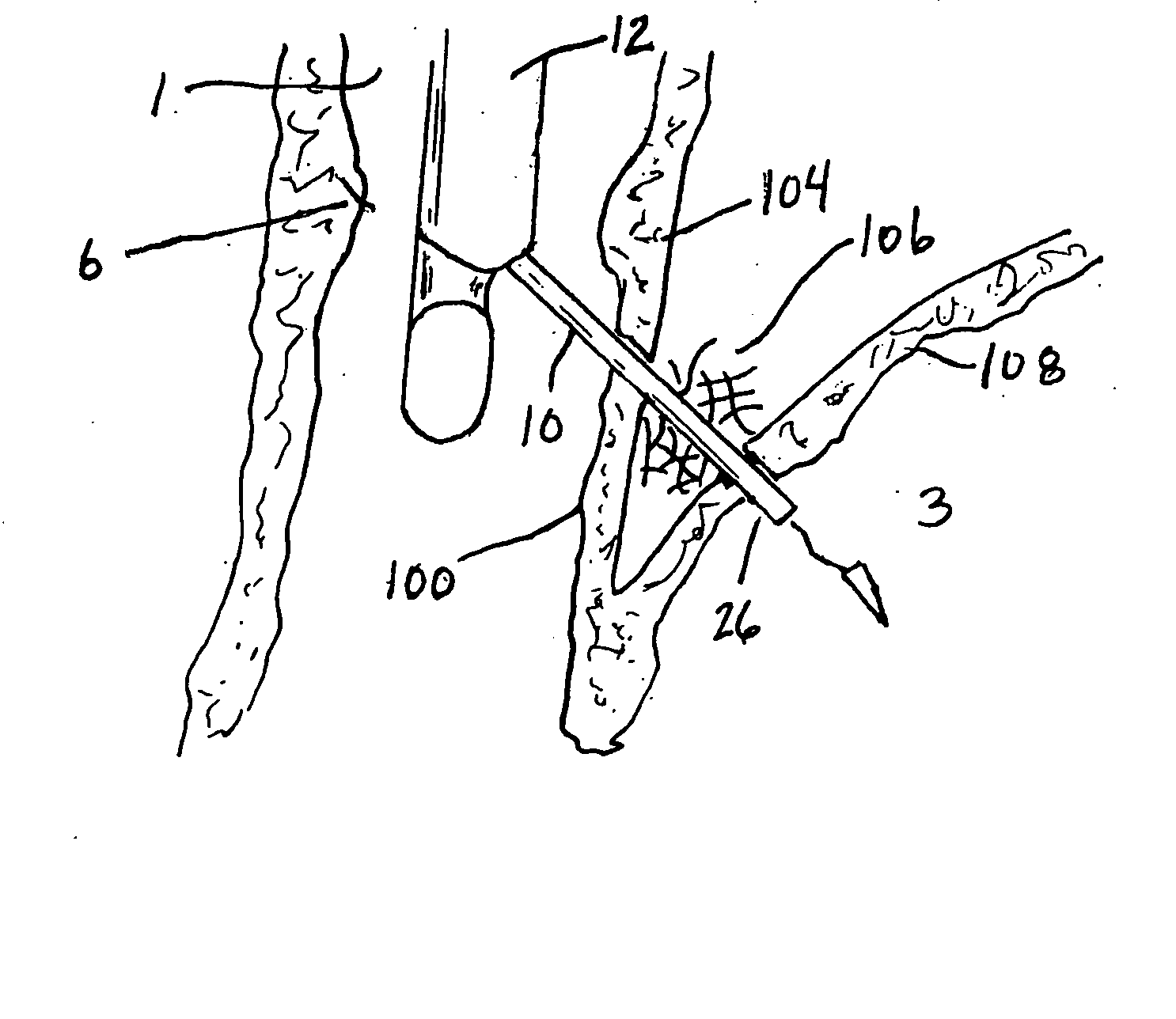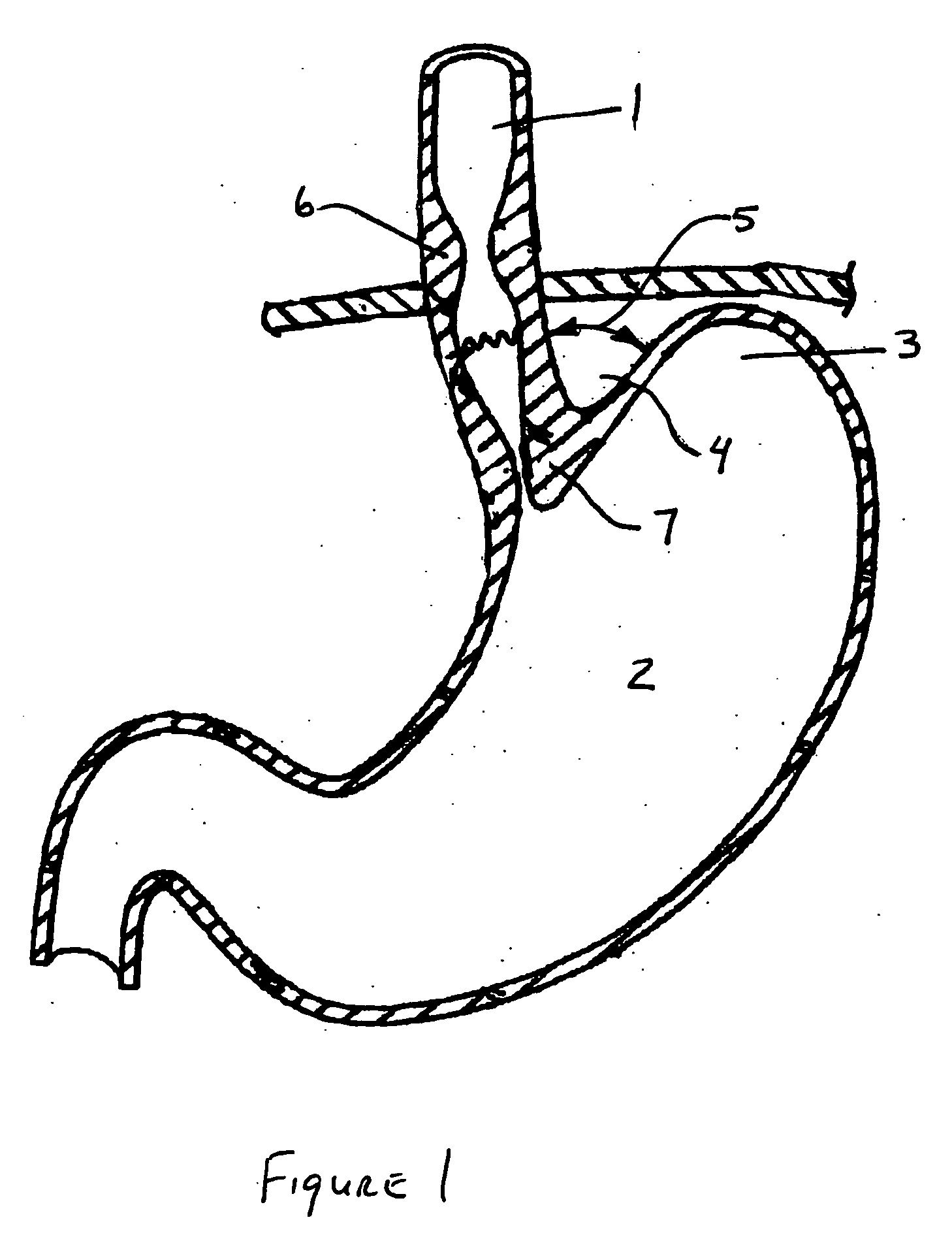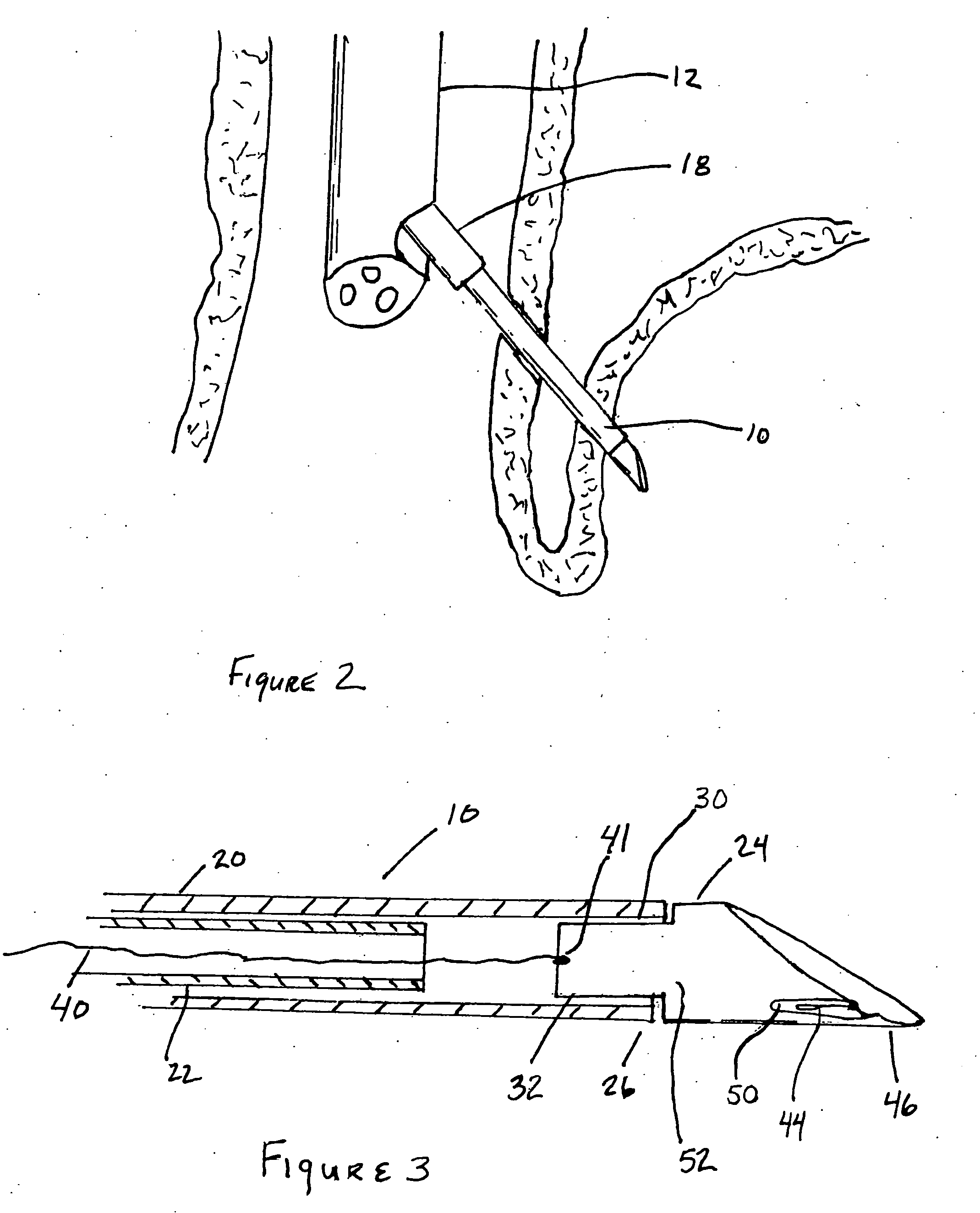Methods and devices for anchoring to tissue
- Summary
- Abstract
- Description
- Claims
- Application Information
AI Technical Summary
Benefits of technology
Problems solved by technology
Method used
Image
Examples
Embodiment Construction
[0036] The system and method described herein may offer improvements over the techniques currently utilized to perform endoscopic procedures. This tissue securement system has several embodiments that are intended to work together to create a novel device and method for the treatment of GERD. However these embodiments also function independently and some of the embodiments of this system may be removed and the system may still achieve its desired function. Alternatively several of these embodiments may be useful as stand alone devices. The principle elements of this system are; an echoendoscope, a delivery needle, a stylet, a needle tip, a connecting element, an anchoring or ligating element and securement elements.
[0037]FIG. 1 is a cross sectional view of the esophageal-gastro-intestinal tract shown from the esophagus 1 to the stomach 2. The fundus 3 forms the superior portion of the stomach 2. The esophagus 1 enters the stomach 2 at a point below the fundus 3 forming the cardiac ...
PUM
 Login to View More
Login to View More Abstract
Description
Claims
Application Information
 Login to View More
Login to View More - R&D
- Intellectual Property
- Life Sciences
- Materials
- Tech Scout
- Unparalleled Data Quality
- Higher Quality Content
- 60% Fewer Hallucinations
Browse by: Latest US Patents, China's latest patents, Technical Efficacy Thesaurus, Application Domain, Technology Topic, Popular Technical Reports.
© 2025 PatSnap. All rights reserved.Legal|Privacy policy|Modern Slavery Act Transparency Statement|Sitemap|About US| Contact US: help@patsnap.com



